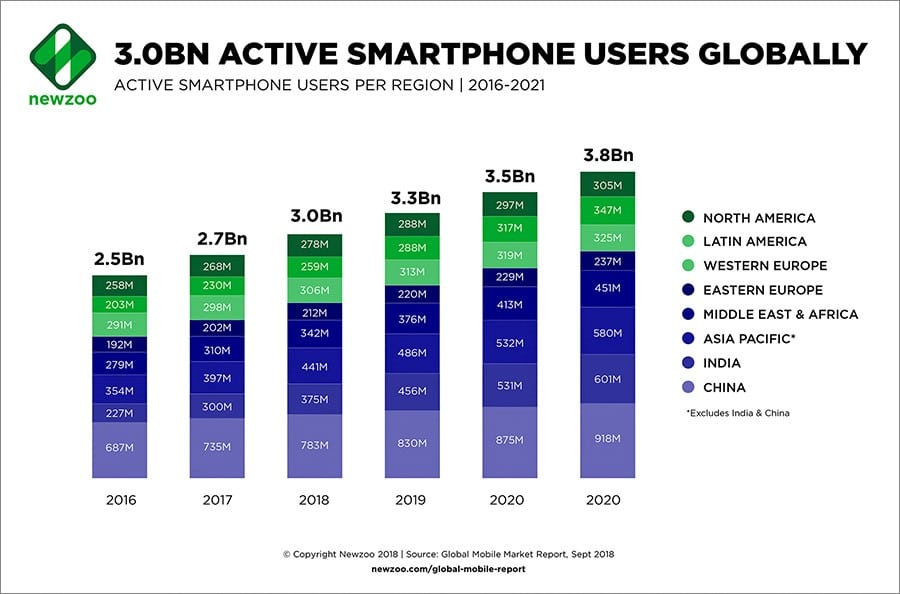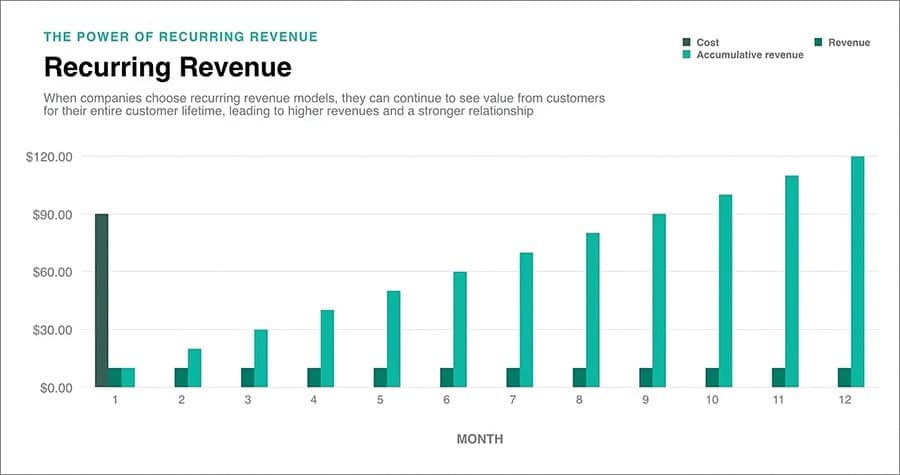The steady growth of the eCommerce sector has set the stage for retail eCommerce revenue to be reaching about $7.4 trillion by 2025. Thus, the rise of eCommerce will continue unabated in the coming years with more companies joining the fray.
However, this will lead to greater competition. eCommerce merchants must stay on their toes if they wish to beat the competition. And that means understanding the newest trends in the industry, which stems from the changing behaviour and preferences of consumers as well as advancements in technology.
So Check out our list of the 10 most noteworthy eCommerce trends for 2020 below:
1. Prepare for the Dominance of Mobile Applications

Every online business requires an efficient eCommerce store to be successful. Modern consumers are interested in using their smartphones to make purchases. Businesses must comply with search engine standards to improve their sites and make them more mobile-friendly to meet the ever-growing demand for mobile applications. If that’s not all, mobile applications are browsed 286 percent more by users for products than mobile websites. So, a mobile application is indispensable if you wish to increase your revenue.
2. Get Ready for Transactional Social Media
Social media will play a huge role in boosting global eCommerce growth. Take China, for example, 55 percent of social media users purchase services and goods in-app. Moreover, 40 percent of merchants have begun using social media for better sales while almost 90 percent of eCommerce consumers rely on social media to make buying decisions. Plus, with most social apps implementing transactional features, now’s the perfect time for your business to focus on omnichannel eCommerce and engage more buyers.
3. Discover the Power of Influencer Marketing
Irrespective of whether you consider influencers ‘celebrities’ you cannot deny their actual influence. 70 percent of millennial buyers take note of their recommendations when shopping online. Also, 30 percent of users will purchase an item suggested by a non-celebrity blogger. So, take advantage of this trend and rope in influencers from LinkedIn, Twitter, Instagram or Facebook to increase the visibility of your brand and products. Steady and responsible investment in influencer marketing is likely to yield rich dividends down the line.
4. Learn About Home Assistants and Voice Search
Home assistants (Google Home, Amazon Echo) and voice search (Google Assistant, Siri) has made the lives of consumers more convenient than ever before. No wonder 39 million US residents have reportedly invested in a voice-activated smart speaker. These devices have added one more channel to the growing omnichannel experience in the eCommerce industry. Voice savvy buyers are rapidly increasing in number and taking over the US market. More and more consumers are using voice-activated systems to order groceries, books, food takeaways and homecare products, inspiring other users to adopt this route.
That’s why you need to integrate one of the most important trends in eCommerce into your application and website and optimize them. Make your brand’s presence felt in the smart home voice assistant industry by introducing an Alexa Skill. Select a digital experience platform for adding the new channel and ensure it’s managed constantly.
5. Consider Subscription Models

The subscription model trend is growing exponentially. These models enable various brands to enter into business partnerships with larger companies to provide free products. Since the continuous advertisement is not necessary with a subscription model, the trend becomes quite cost-efficient. Subscription models allow for numerous applications in the eCommerce industry, such as the context-based search for relevant results.
6. Introduce Improved Payment Processing
Payment is the last stage in the customer journey, and it can either make or break the conversion. If the experience is less than smooth and effortless, you end up losing a possible buyer. 28 percent of consumers abandon their carts due to a complicated or long checkout process. So, for quick conversions, you need to provide a smooth, hassle-free checkout process with easy payment options.
Keep in mind that 13% of buyers abandon their purchases without any local payment option. Thus, the expansion of your eCommerce brand will be possible only if you provide better payment solutions to shoppers in other locations. It helps to consolidate payment options into a single platform for easier management of platform and currency. However, keep an eye out for regulatory and compliance challenges.
7. Think About Newer Modes of Payment
While CoD (Cash on Delivery) has become the norm for eCommerce sites, consumers are increasingly using newer payment options. So, apart from credit and debit cards, expect to see digital wallets (Apple Pay, Google Pay) and instant layby (Afterpay, ZipPay). Thus, you must familiarize yourself with these seamless payment choices and cryptocurrency. These newer methods empower buyers to purchase without a deposit, allowing them to achieve instant gratification with minimum hassle. Remember, quick payment options speed up the conversion process by over 20 percent.
8. Monitor the Rise of VR and AR
Virtual and augmented reality has made it possible for buyers to discover products outside brick-and-mortar shops in innovative ways. Bigger brands have already begun to invest heavily in AR for providing new shopping and browsing experiences to the customers.
VR is also being used to provide 360-degree previews of products and services. Real estate agents, for example, have begun using this technology to give tours of properties without the customer having to be physically present. Hotel chains have also welcomed the idea. Thus, it’s only a matter of time before you need to find use cases for VR and AR in your business.
Even Shopify is introducing VR technology in its shop to allow a merchant to upload the new king of the product image.
9. Invest in Interest-Based Ads
Focus more on providing personalized ads to users. Google has already been offering ads based on customer preferences. So, offering interest-driven advertisements that are customized is something you’ll see more of soon. Users will view ads they wish to see and this is going to be supported by advancements in eCommerce digital marketing services. The best ads will be visible once the browsing history becomes integrated with machine learning, and this will lead to increased sales and greater conversion for businesses.
10. Provide Improved Product Visualization
Nearly 40 percent of online consumers return purchases due to insufficient product details. Also, 90 percent will not purchase again from retailers who offer them wrong product information. Refunds and returns aren’t merely a nuisance – they affect your conversions, profits, and your overall business reputation. But recent trends in eCommerce product visualization helps describe items better and decrease returns.
Product visualization will be more than regular images in 2020. There will be interactive elements available, such as demonstration videos, 3D images, and high-fidelity zoom. These features enable sellers to manage expectations and help customers make informed purchases without any regret. At the same time, they add to the whole shopping experience while reducing returns.
eCommerce Trends for 2022: concluding Remarks
The eCommerce industry is growing rapidly and new eCommerce trends in 2022 will be customer and technology-based. This indicates the eCommerce industry is advancing along with technology, and you need to keep up if you want your brand to grow and earn greater revenue.
Perhaps the biggest talk of the year in eCommerce, in terms of technology, is Augmented Reality. More and more mainstream brands choose to provide this service to their online shoppers. This choice has been proved to benefit companies and customers alike. The immersive experience provided by AR allows stores to interact with new consumers and convert them into returning customers. In this way boosting both the customer satisfaction and sales conversion rates.
The only issue used to be finding a company who can help you create a GLB file that can be easily loaded up on your eCommerce store.
Well, this is not an issue anymore since Yakkyofy can help!
We provide a full solution that includes sourcing your goods from some of the best Chinese vendors as well as creating a 3D rendering AR file for you to upload to Shopify or WooCommerce.
Simply log in to Yakkyofy, purchase a sample, and request a 3D AR file!












